Non-nuclear submarines of the projects "Type 212" and "Type 214"
At the same time, Italy has also shown interest in promising submarines. In the last decades of the last century, the countries of Western Europe jointly created a large number of types of various military equipment, so they decided to do the new submarine together too. The agreement on the implementation of the joint project was reached in 1994 year. By this time, the German military assigned the name “Type 212” to a promising project. Soon appeared and the Italian name: Todaro, the alleged name of the head of the submarine for the Italian Navy.
It should be noted that the military fleets of the two states had different requirements for new submarines. For example, Germany needed submarines capable of operating primarily in the shallow depths of the Baltic Sea, and Italy wanted to get similar ships adapted to the conditions of the Mediterranean Sea. As a result of discussions and consultations, the parties came to a compromise solution. Requirements for the new project were formed taking into account the wishes of both countries. After the appearance of new requirements, Germany changed its designation of the project to "212".
In 1996, the parties signed a memorandum, according to which the development of a new project began. By this time, the basic requirements for promising submarines were identified. In their design and on-board equipment, it was required to use the newest technologies, which should provide the highest possible characteristics. So, it was required to equip the new submarines "Type 212А" with an air-independent power plant, providing the possibility of a long stay at depth. The use of such systems allows to classify the boat as non-nuclear (NNS). In addition, it was necessary to reduce noise and use other techniques to reduce conspicuity.
The German companies Howaldtswerke-Deutsche Werft GmbH (HDW) and Thyssen Nordseewerke GmbH (TNSW) were involved in the development of the new project. The memorandum stipulated the construction of six Type 212A submarines. Four units were planned to be built at German enterprises and transferred to the German Navy, two more were to be built in Italy for its needs. Also military the fleet Italy left the opportunity to order two additional submarines. The submarines for the Italian Navy were to be built by the shipyards Fincantieri and Muggiano.
The construction of the 212A submarines started in 1998 year. German shipbuilders, as planned, received an order for four ships, Italian - for two. In the future, both sides exercised their right to increase the series, ordering two additional boats. Shortly after construction began, new submarines in a modified form were offered to potential buyers in the face of foreign naval forces. It was assumed that new technologies and high performance will be able to interest new customers.
The authors of the project "Type XNUMHA" had to enter all the necessary units in the hull, taking into account the operation of submarines in the Baltic Sea. Thanks to a number of technical solutions, primarily related to the layout of external units, new naval submarines are able to dive in water areas of at least 212 m depth. The total length of 17A submarines in the basic version of the project is 212 m, width is 56,08 m, normal draft is 7 m In the surface position, the displacement is 6 t, in the submerged position - 1580 t.
Submarines "Type XNUMHA" have a two-hull design. The durable case is made of low-magnetic steel alloys, lightweight - with the wide use of reinforced fiberglass. Of great interest is the design of durable housing. It consists of two cylindrical units connected by a truncated pyramid shaped compartment. Inside the nose cylinder of a larger diameter is located the nose compartment with torpedo tubes and all habitable premises. The aft part of the hull and the "adapter" are allocated for the placement of various units of the power plant. In addition, gas tanks for the storage of oxygen and hydrogen are placed outside the aft of the robust hull.
In order to increase the time during which the submarine can be under water, in the project “Type 212А” a rather complicated, but very interesting combined non-nuclear power plant was used. When driving on a surface or at shallow depths, the power source should be a diesel engine MTU 16V-396. It is connected to a generator that supplies electricity to lead-acid batteries and a Siemens Permasyn electric motor with an HP 1700 power. The latter sets in motion a propeller with seven saber blades.
For covert movement at the depth of the submarine "Type XNUMHA" can use their power plants in air-independent mode. In this case, oxygen-hydrogen fuel cells based on polymer electrolyte are used as an energy source. On the head NNL for Germany (U212) there was a battery of 31 of such units with a capacity of up to 9 kW each, developed by HDW and Siemens. Two 40-kilowatt elements from the same companies are used on the following submarines. The operation of fuel cells requires the supply of hydrogen and oxygen. Volumetric cylinders for storing this “fuel” are placed inside the lightweight body. Oxygen cylinders are located on the upper surface of a strong body, hydrogen - on the bottom.
According to available data, the used air-independent power plant has high efficiency, including in comparison with the used diesel generator. The efficiency of diesel fuel generators usually does not exceed 30-35%. Fuel cells mounted on Klass 212A submarines are capable of "delivering" up to 60-65% of the hydrogen energy. However, fuel cells have certain limitations on maximum power, which is why all versions of the project use batteries from such units.
It is argued that the high efficiency of fuel cells in combination with the large volume of gases stored on board allows the 212A Type submarines to be at sea for three months. Continuous diving is allowed for 21 days. At this time, the NSN does not need regular ascents to turn on the diesel engine and recharge the batteries. Depending on the need, the crew can combine the work of power plant units. So, for acceleration to maximum speed, sharing of batteries and fuel cells is allowed.
In the surface position of the submarine "Type 212A" can reach speeds up to 12 nodes. Maximum submerged speed - 20 nodes. The maximum cruising range in 8 thousand nautical miles is reached in surface position at the economic speed of 8 knots. When moving at depth, the duration and cruising range are significantly reduced. However, even in this case, the new submarines retain quite high performance. For example, in April 2006, the German submarine U32 set off on a hike from its base on the Baltic Sea and reached Spain in a few days, breaking 1500 nautical miles. The robust hull allows the 212A submarines to dive to a depth of 700 m.
Armament submarines "Type 212A" consists of six torpedo tubes caliber 533 mm, located in the nose of the hull. The devices are located in three tiers, two in each. In the bow compartment of the submarines there is a place for the transport of 13 torpedoes. Allowed to use weapons different types with different characteristics. Especially for the Type 212А submarines, a promising IDAS rocket is being developed, which is supposed to be launched through a torpedo tube. If necessary, on the outer surface of the light hull of the submarines can be installed ejector for 24 marine mines.
The crew of the new German-Italian submarines includes 27 people, including 5 officers.
To monitor the situation and search for targets, the crew must use an integrated complex of various means. There is a set of sonar systems, including a towed station and a sonar to search for mines. Also, the submarine is equipped with two periscopes of Zeiss Optronik. To search for targets, it is proposed to use the SERO 14 periscope with an optical rangefinder, a thermal imager and the ability to determine the coordinates of the target. Periscope Zeiss SERO 5 is equipped with a laser rangefinder and is designed to conduct an attack.
1 July 1998, the ceremony of laying the head of the non-nuclear submarine "Type 212", received the designation U31. This naval base was built for the naval forces of Germany. The boat was launched in March 2002 of the year, and in the fall 2005-oh was taken into service of the fleet. In 2000 and 2001, three more submarines of the project with numbers from “32” to “34” were laid. All of them were commissioned in 2005-2007's. Shortly thereafter, the construction of new submarines for the German Navy continued. The German military wanted to purchase two additional submarines.
According to reports, these two submarines "Type 212A" were built on a slightly modified project that differs from the base. First of all, the onboard equipment complex has undergone major changes. In addition, it was planned to ensure the possibility of effective combat work in a tropical climate. The service of two upgraded submarines began in 2011 and 2013.
The first non-nuclear submarine "Type 212A" for the Italian Navy was named Salvatore Todaro and was laid down in July 1999. In May, the Scirè submarine took place on 2000. These ships were launched in November 2003 and December 2004, respectively. From March 2006 and February 2007, they serve as part of the Italian Navy. In August, the Italian military 2008, by which time had already received some experience in operating the new submarines with an air-independent power plant, ordered the construction of two new 212A / Todaro submarines. In accordance with the contract, two new boats must be built, tested and transferred to the customer in 2015 and 2016.
As already mentioned, shortly after the construction of the “Type 212A” submarines began, an export version of the project was proposed for the German and Italian naval forces, which was offered to foreign customers. Since the project "212A" managed to introduce a number of new technologies, such submarines should have been of interest to foreign military. Nevertheless, it was planned to remove some features from the export version of the project in order to preserve the advantages of the submarines built for the German and Italian fleets.
The export version of the non-nuclear submarine "212" received the designation "Type 214". The most serious changes implemented in this project touched the materials of a solid hull. Thus, the boats of the basic project “Type 212А” have a low-magnetic hull, which reduces the probability of their detection using magnetometers. Export submarines should receive a “normal” robust hull that does not have such special properties. In addition, certain adjustments were made to the equipment and weapons.
A curious feature of the Klass 214 export project was the proposal for the construction of the ordered equipment. New submarines could be built both in Germany and in the enterprises of the country of the customer. Most customers expressed a desire to master the independent production of new equipment: only 3 from 23 of the currently ordered submarines "Type 214" left the stocks of HDW. The rest were built, built or will be built by the customer.
The first customer of new export submarines was Greece. At the request of the Greek military, the German experts refined the onboard equipment, replacing some of its components. At the end of February 2001, the first submarine “214” was laid for the Greek Navy. The submarine Papanikolis was built on a German shipyard and tested by HDW specialists. In the future, production was carried out by the Greek industry. For certain reasons, the head boat of the Greek order entered the fleet only in 2010 year. With 2004, she was on the test, which was seriously delayed due to a number of technical problems. As a result, the construction of submarines for Greece continues with a large lag from the original schedule. So, in 2015, it is planned to hand over the second submarine of the series, Pipinos, laid back in 2003. In total, Greece wants to get six submarines of German development. Four were ordered in 2000, two more in 2010.
Also in 2000, a contract was signed with South Korea, implying the construction of three boats. The lead ship, Son Won-il, was laid in 2002 and passed at the very end of 2007. Currently, the Navy of the Republic of Korea has four “Type 214” submarines, the latter of which is being built under the second contract of the year 2008. Then the South Korean military acquired the right to build another six new submarines. All five remaining submarines are at different stages of construction. It is noteworthy that the first three submarines for the South Korean fleet were built by Hyundai Heavy Industries, and two more shipyards had to be involved in the execution of the new order.
In 2005, two non-nuclear Klass 214 submarines were ordered by Portugal. Due to the lack of necessary production capacity, the official Lisbon ordered the construction of the HDW company. The ordered submarines entered the Portuguese Navy in the 2010 and 2011 years.
In 2008, it became known that Pakistan is showing its interest in the "Type 214" submarines. This country could buy at least three submarines, as Pakistani and German officials have repeatedly said. The first boat of the contract could be built and transferred to the customer within 64 months from the date of signing the agreement. The transfer of the second and third submarines could take another year. Great hopes were pinned on the contract with Pakistan, but the potential customer hesitated for several years. As a result, the Pakistani military became interested in Chinese developments and stopped negotiations with German shipbuilders.
Since the end of the last decade, negotiations were conducted with Turkey. This customer wanted to build six new submarines on their own. Negotiations were associated with some problems. In particular, the Turkish military wanted to get equipment with a modified set of equipment. In 2009, the first cooperation agreement was signed, and in July, a solid contract worth 2011 billion appeared in 2. Construction of the 214 submarine will continue until the end of the decade.
In March, 2011, Poland signed an agreement with France, according to which licensed construction of non-nuclear Scorpène submarines should begin at Polish shipyards. Earlier, the Polish military showed interest in the German project "Type 214", but after analyzing the foreign proposals, it was decided to stop at the French-designed submarine.
It should be noted that the export version of non-nuclear submarines of the German-Italian development was not without noticeable flaws. As in the case of the Klass 212A project, German shipbuilders had to identify and correct defects in the course of testing, under the close supervision of the customer. For example, the first NNS for Greece (Papanikolis) could be transferred at the end of 2006 or the beginning of 2007 of the year. However, during the tests, overheating of the fuel elements, unacceptable cavitation on the propeller, rolling too much during agitation, etc. were revealed. These problems almost turned into an international scandal. Greece refused to accept a submarine with problems, and soon a journalistic investigation appeared in the Greek media exposing the quality of the ordered ship. Over the next few years, German shipbuilders were engaged in fine-tuning the export boat, which was again put to the test in the 2008 year. Because of all these events, the submarine Papanikolis entered the Greek Navy only in the last months of the 2010.
In 2008, in the South Korean press, there were reports of some shortcomings of the ordered German submarine associated with the operation of the power plant. However, this information has not received official confirmation. According to official sources, the new submarines completely staged the South Korean Navy. One of the results of this is the new contract for the construction of six additional submarines.
To date, German and Italian companies have built a total of 12 non-nuclear submarines "Type 212А" with an air-independent power plant. In addition, the 6 submarines of the 214 Type export project were built and delivered to the customer. New orders for the supply of the base project submarines have not yet appeared. In the foreseeable future, submarines of the export project will be built, tested and transferred to the 17 customer. In addition, it is possible the emergence of new orders from countries that have not yet shown interest in the German-Italian project.
The project of a non-nuclear submarine Klass 212A was created with a wide use of the latest technologies, such as an air-independent power plant, a low-magnetic steel of a sturdy hull, or the most advanced sonar equipment. All these ideas and solutions allowed Germany and Italy to create modern submarines and with their help maintain the required combat capability of the naval forces. In addition, an export version of the project was created, which, despite the exclusion of some “know-how”, was able to interest foreign buyers.
Currently, the submarines of the project "212A" are one of the representatives of the not yet too numerous class of non-nuclear submarines with an air-independent power plant. In addition, the export version of "214" has almost no competitors on the international market of weapons and equipment, which to some extent contributes to the emergence of new contracts. Thus, belonging to a small class of promising technology, as well as the presence of several export and licensing contracts, allows to consider the project "212А / 214" one of the most successful modern developments in the field of submarine fleet.
On the materials of the sites:
http://globalsecurity.org/
http://militaryfactory.com/
http://naval-technology.com/
http://marine-portraits.de/
http://janes.com/
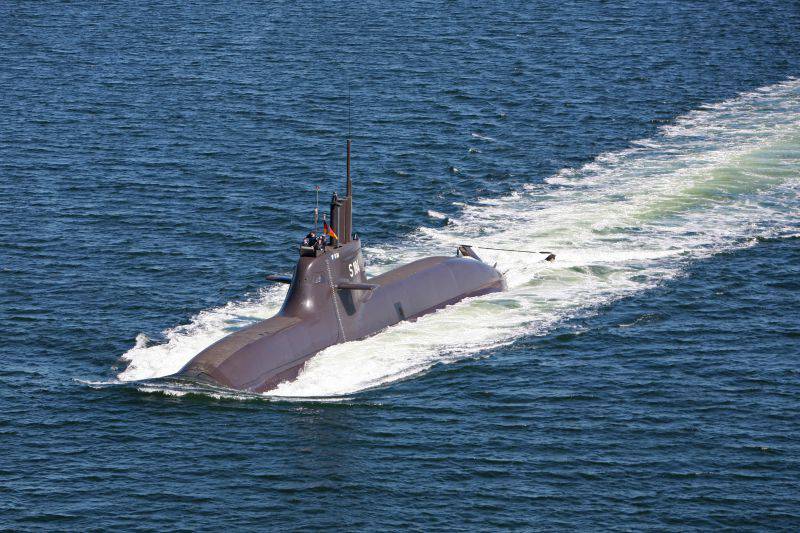
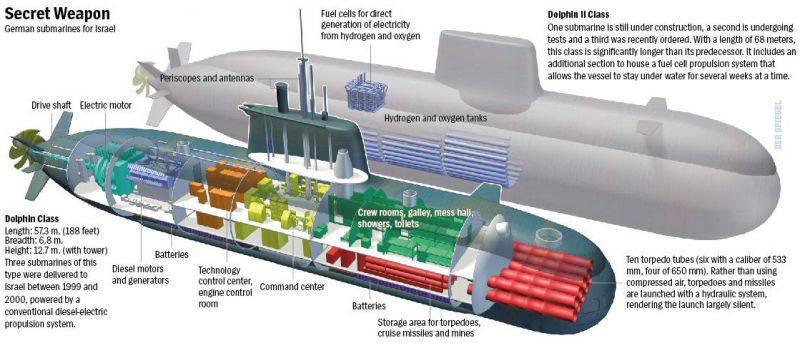
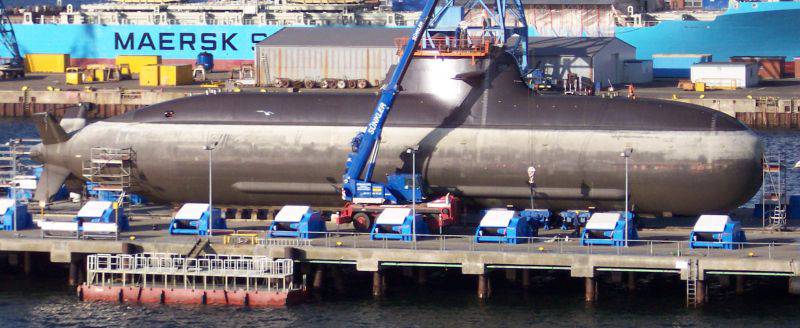
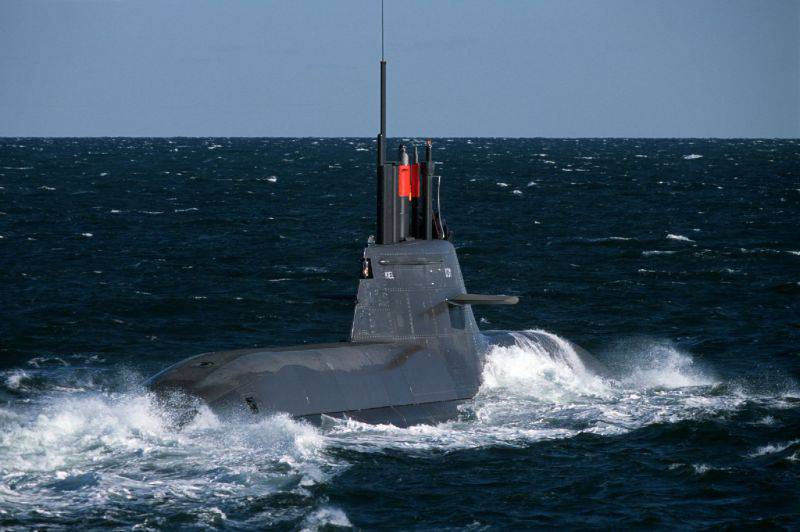
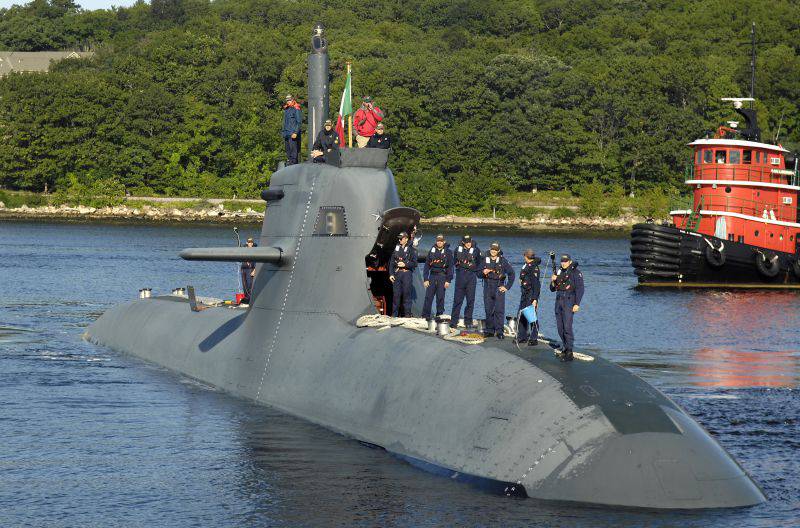
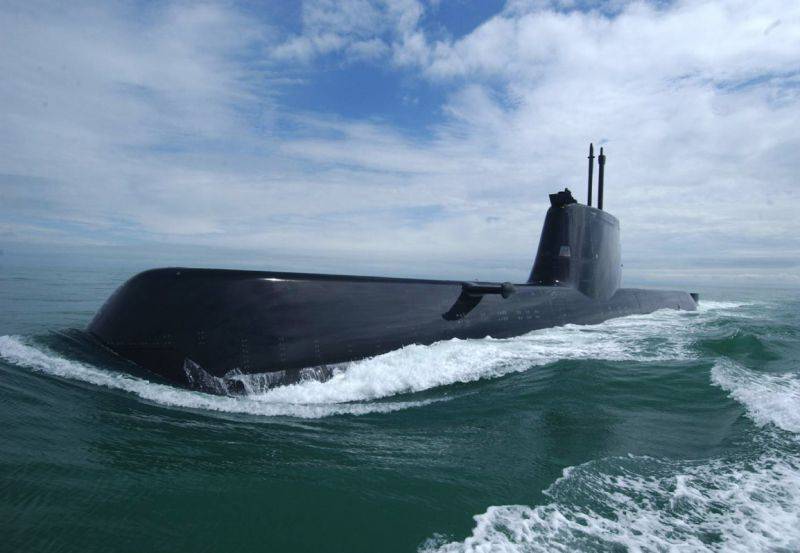
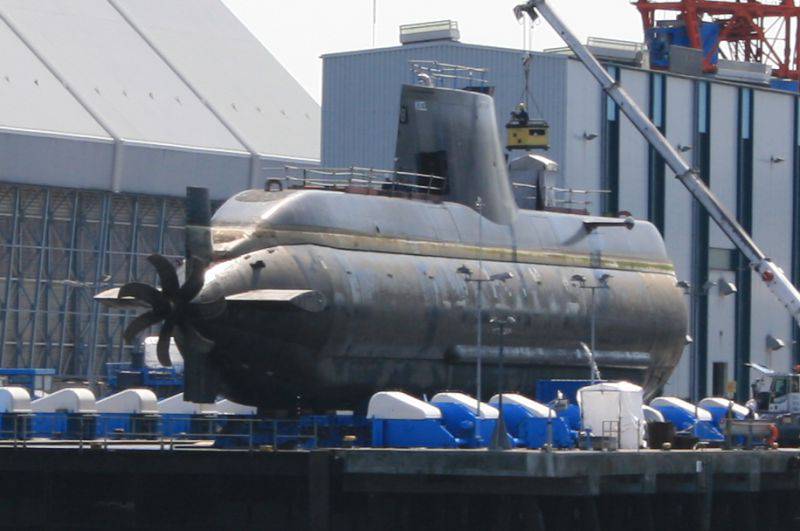
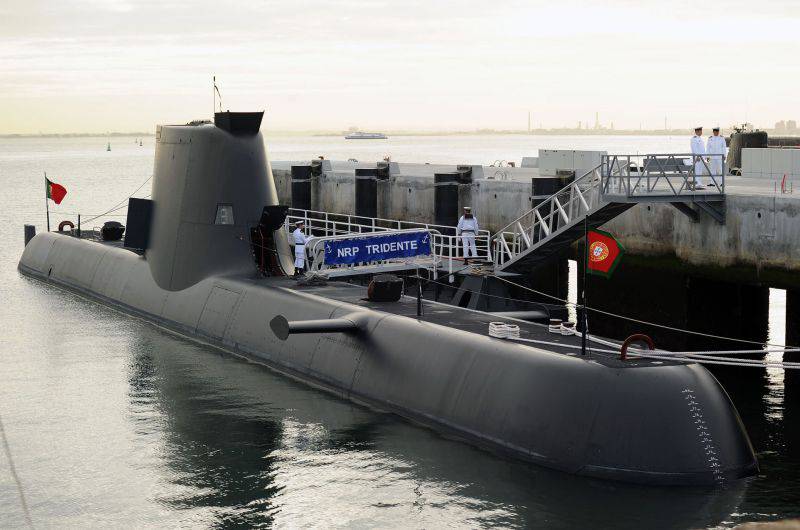
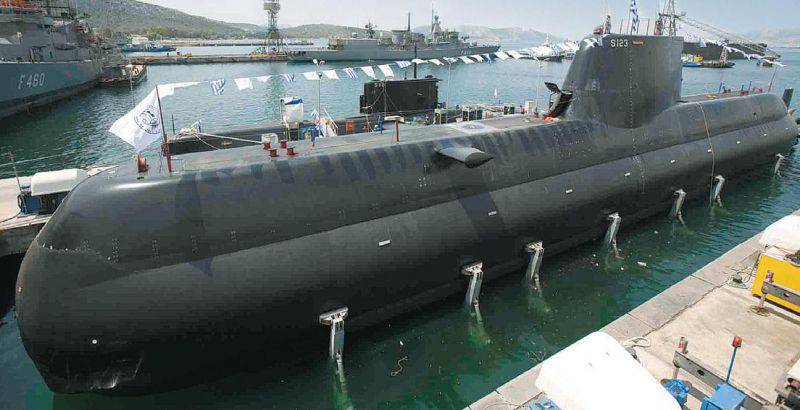
Information